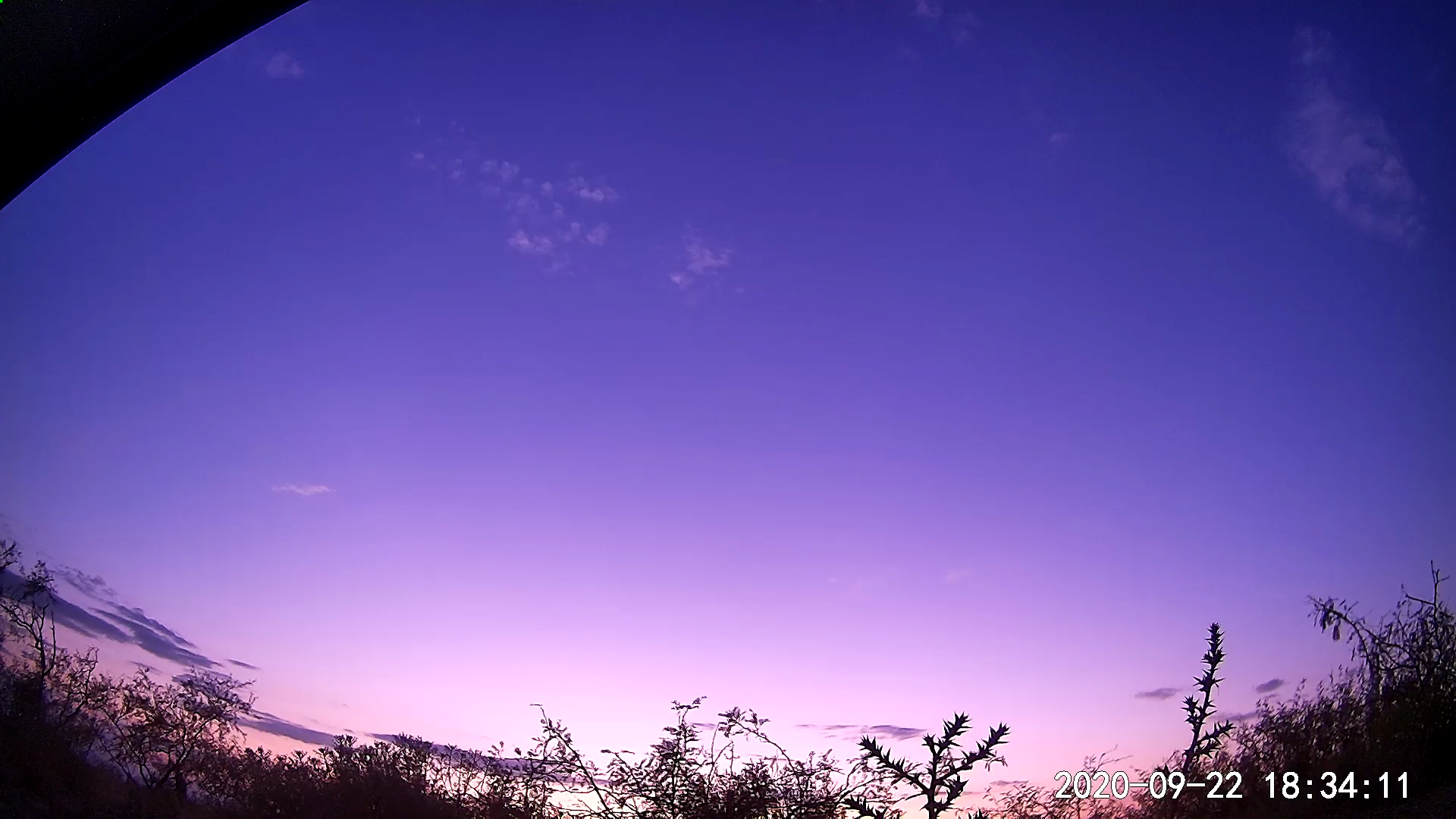AZ Burners Weather Station
4th October 2020So, I seem to have a penchant for measuring things. Being a Skywarn volunteer means that I also have a slight obsession with the weather. So, when I travel to burns, it's natural that I'd want to measure the weather out there.
I'm currently working on the third version of a weather station, which is located on the new Saguaroman property, near Willcox, AZ.
This is the fourth version of a portable weather station that I've 'deployed' at various burns. My first version was in 2018 at Saguaroman near Snowflake, AZ. This event was better known as Windyman. My station recorded sustained winds of 50mph that weekend, with gusts higher. In 2018, I took the equipment to BurningMan. The temperature wasn't calibrated and was affected by reflected IR, and measured temperatures of up to 110 degrees on playa.
This year, I've replaced most of the hardware, modularised various features, and am adding several webcams, WiFi, and replaced the solar panels with much more powerful used commercial panels.
The goal? Why am I doing this? Ultimately because I can. I enjoy creating and managing embedded systems, and when I attend burns, the question inevitably comes up, what is the weather at the burn?
Now, we can see, in real-time and historically, what the weather is like.
Here's a description of the setup:
Sensors:
Weather (temp, humidity, wind, rain)
Sunrise and Sunset imaging
Wildlife sensing
The weather sensing component right now is provided by a WS1 weather station by Argent Data systems. This is usually connected as an APRS weather station, but in my case I have it connected to a RaspberryPi running (among other things) Weewx. This information is uploaded over 4G to my webserver at home, and can be viewed here.
The imaging component is provided by 2 (soon to be expanded to four) Wyze webcams flashed with RTSP firmware, and polled by a Motioneye installation also running on the RaspberriPi. Along with providing real-time imagery, snapshots are taken every 15 seconds and are stitched together to create a time-lapse of the area over the course of the day. Additionally, motion detection is used in Motioneye to record videos of any animal movement.
Power:
500W of solar power, ~2kWh battery storage, ~25W nominal system power.
A bit overkill, but the system uses two 250W rated solar panels in series to provide over 500W total solar power into 2 deep cycle marine batteries, managed by a Renology MPPT controller. An OpenUPS power supply provides temporary backup in case of intermittent outage, and also monitors and reports battery voltage to the RaspberriPi. 5 volts is provided by a 15 amp regulator. I use telegraf and some custom scripts to collect and report this data to an Influx database running at home on my server. You can see this information here.
Communication:
Connectivity with the stations is provided by a Verizon USB 4G modem that is connected to an Alix i386 motherboard, with 2 wifi mini-pci cards attached. A custom compiled Openwrt installation runs and manages the firewall, as well as a local Wifi access point that allows communication with the various sensors on a local lan.
A 2m ham radio APRS controller, radio and antenna is attached, but is not currently turned on.
System control:
Power to individual modules is controlled via a Sonoff 4 channel wifi switch, that has been reflashed with Tasmoto. This allows any connected system to power cycle any module. With a 4 hour drive to get to the system, remote control is essential.
Future plans:
Although the current setup achieves all the original design goals, there's always more I can do.
Specific plans include the addition of at least 2 more webcams. Additionally, I could add a remote battery powered webcam to view flash flooding in the local ravine on the property, and I also have a wyze pan cam that can pan left and right and scan to actively look for wildlife.
Cooling is also an issue currently as the core system temperature is exceeding 170F daily during the summer right now. I would like to expand the cooling infrastructure to include wifi-switched fans, but soon as winter approaches, the problem will switch to keeping the system from freezing.

View Comments